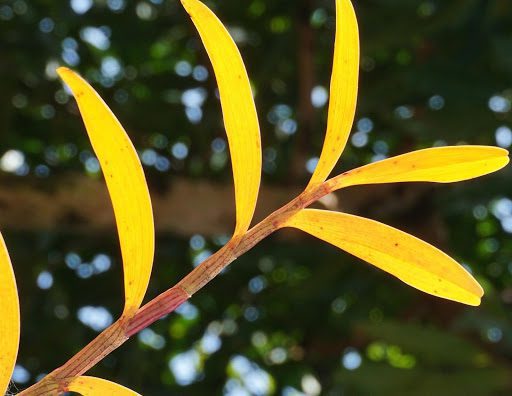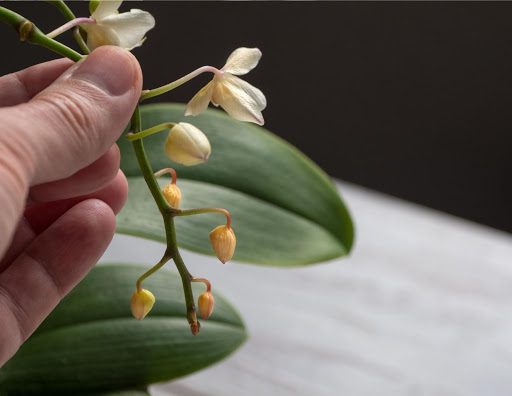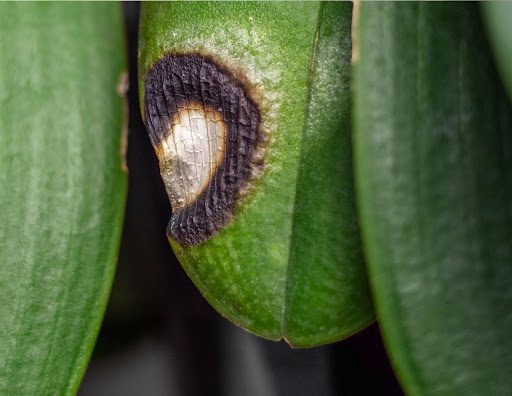Having an orchid is a delight. Its blooms and foliage are so striking that your orchid easily becomes the centerpiece of your indoor garden. All your visitors remark how beautiful it is, and you enjoy its intricate shapes every day during your morning coffee or evening tea.
It can be a bit shocking, then, when your most show-stopping plant takes a turn for the worse. And since orchids have different needs than your other plants, you might be left wondering what your orchid is trying to communicate with its wilting blooms, wrinkled foliage, or yellowing leaves.
The good news is that there are many ways to tell if your orchid is sick or suffering. Most of the time, your orchid simply needs a pick-me-up or a slight change in care, though sometimes your orchid can be sick with an infection or disease.
Let’s take a look at the seven most common signs that your orchid is sick, and learn how to nurse your most dazzling plant back to health so you can show it off with pride.
Sign #1: Your orchid’s leaves are turning red.
Across most orchid species, red leaves usually indicate that your plant is receiving too much light. Red or purple leaves are a form of sunburn. Of course, your orchid needs healthy leaves to thrive, so damaged foliage is a sure sign that your orchid is suffering.
Sunburnt leaves might occur during summer months when the midday sun is strong. Be sure to reevaluate how much sun your orchid is getting at the start of each new season.
Professional Tip: To avoid overexposure to direct light, move your orchid to a shadier environment. Sometimes it’s as simple as moving your plant a few feet away from the window or using a sheer curtain to shield it from direct rays.

Sign #2: Your orchid’s leaves are yellowing.
While red leaves typically indicate sunburn, yellow leaves point to a different kind of orchid distress. If your orchid is showing yellow, limp, or wilting leaves, it’s likely over-watered.
The simplest fix is to pause your watering routine and let your plant dry out. Though you still have time to reverse the damage, over-watering can easily lead to root rot (a condition discussed below), so it’s important to pull back on watering as soon as you notice your orchid’s leaves turning yellow.
Professional Tip: The simplest way to avoid over-watering is to use an orchid potting mix that promotes quick drying and only water your plant when it’s thoroughly dry.

Sign #3: Your orchid’s flowers are wilting early.
As the season progresses, your orchid’s flowers will wilt and drop, and your plant will begin its wintering process. Naturally, the oldest, lowest flowers along the spike will wilt first. Over time, wilting will progress up the stem.
But if your orchid’s flowers are wilting during bloom season, or within three weeks of purchasing your plant, your plant is trying to tell you something. Early flower wilting is a sign that your plant is thirsty. After a good drink, your flowers should appear full and healthy within 24 hours of watering.
Professional Tip: On watering day, go ahead and soak your orchid’s potting mix through until water runs out of the pot’s drainage holes. Some growers simply hold the pot beneath a faucet to make sure the orchid is adequately watered.
Sign #4: Your orchid has wrinkled foliage.
If your orchid has wrinkled foliage or corrugated leaves, it’s a sign that your plant is dehydrated.
But don’t panic. Wrinkled leaves are an early warning sign. There’s still plenty of time to give your parched plant a drink to revive it.
Professional Tip: A humidity tray can go a long way to keep your plant hydrated. Don’t forget that most orchids naturally grow in tropical environments, so they love moist, humid conditions.

Sign #5: Your orchid’s roots are brown or yellow.
If your orchid’s roots are brown, yellow, or mushy, it’s likely suffering from root rot, a condition brought on by over-watering.
Remember, orchids don’t have roots like other houseplants. Their root systems are delicate and are designed to thrive when they are dry and have access to air. They are susceptible to root rot and water damage, so when in doubt, always err on the side of less water.
Professional Tip: To prevent root rot, be sure to use the right orchid pot. A good pot will have plenty of drainage and ventilation holes to allow excess water to escape and fresh air to permeate the growing mix. For more tips on how to choose the perfect orchid pot, click here.

Sign #6: There are water-soaked spots or yellow halos on your orchid’s leaves.
Yellow halos on your orchid’s leaves likely indicate a plant infection called Erwinia. This plant disease is known to cause a foul odor and your plant to have a water-soaked appearance.
In some orchids, Erwinia can spread rapidly, sometimes causing the entire plant to rot within two or three days. So, if you notice these early warning signs, remove the infected area immediately.
Professional Tip: When removing a damaged or infected part of your orchid, always use a pair of sterile, sharp shears to make a clean cut and avoid spreading the infection or causing another one.
Sign #7: Your orchid is turning black.
If your orchid is turning black, it likely has a fungal or bacterial infection. Unfortunately, black spots on your orchid aren’t a good sign.
If the black spots have already spread to your orchid’s leaves or pseudobulbs, it might be time to get rid of the plant. Diseases like black rot can spread quickly from one orchid to the next, so it’s safest to get rid of the infected orchid.
Professional Tip: The best defense against infection is prevention. Use a trustworthy orchid fertilizer to keep your plant healthy so it can ward off pathogens and protect itself from diseases. Premium Orchid Food is a gentle fertilizer designed to deliver key nutrients to your orchid so you don’t have to worry about pesky invaders damaging your most beautiful plant and making it sick.
A Recap: How to Tell if Your Orchid Is Sick and What to Do Next
There you have it. You’ve learned the seven most common signs that your orchid is sick or suffering. Here’s a recap so you can tackle those warning signs and start nursing your sick orchid back to its beautiful, healthy state.
- If your orchid has red leaves, it’s getting too much direct light. Move it to a spot where it gets indirect sunlight.
- If your orchid has yellowing leaves, it’s likely over-watered. Use a well-draining orchid potting mix and pause your watering routine until the medium dries thoroughly.
- If your orchid has brown or yellow roots, it might be suffering from root rot. Repot your orchid in an orchid pot with plenty of drainage holes.
- If your orchid’s flowers are wilting early, it might be thirsty. Give it a thorough drink by running it beneath a faucet until the water runs out of the pot’s drainage holes.
- If your orchid has wrinkled foliage, it’s probably dehydrated. Place your orchid on a humidity tray to give it an environment that provides extra moisture.
- If your orchid shows yellow halos on its leaves, it may be sick with Erwinia. Use a pair of sterile, sharp shears to remove infected areas.
- If your orchid is turning black, it may be sick with a fungal or bacterial infection. Prevent plant infections by using Premium Orchid Food, a gentle fertilizer formulated to nourish your orchid so it can fight off infections and stay healthy year-round.
If you have any concerns about caring for your sick orchid, join our Facebook community where you’ll meet other folks like you and get access to our exclusive orchid-growing tips and tricks.



